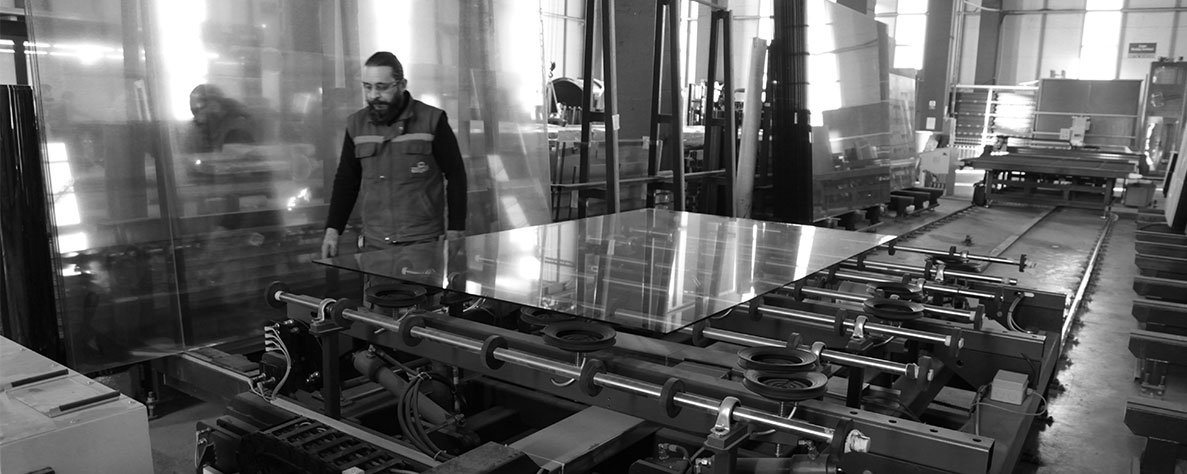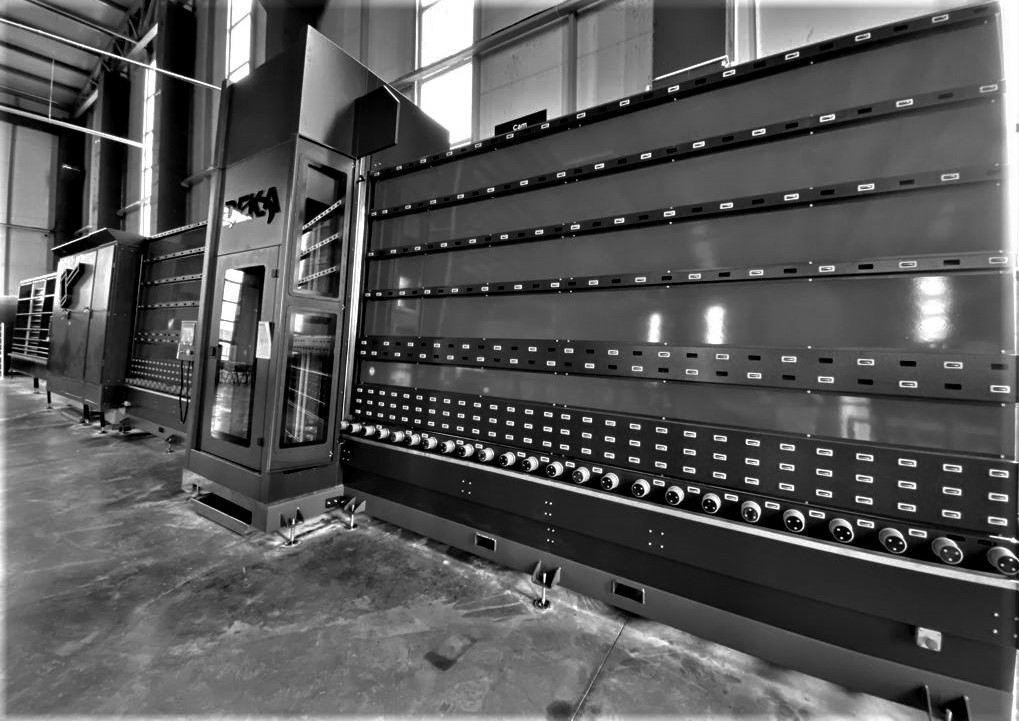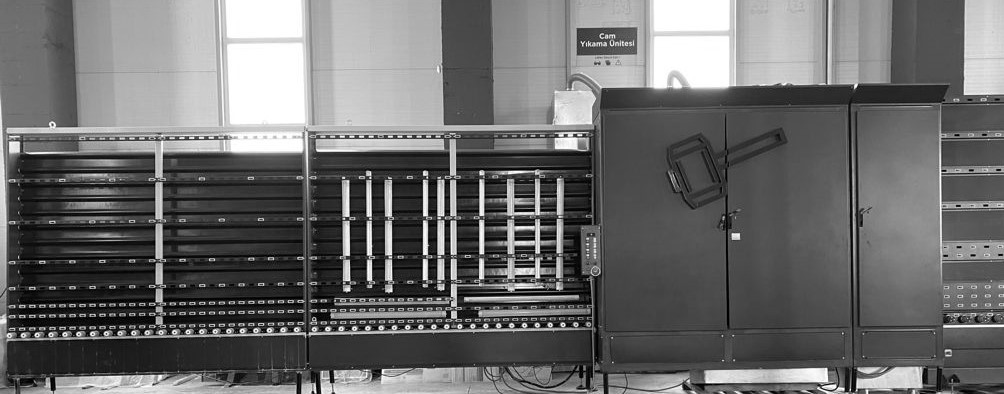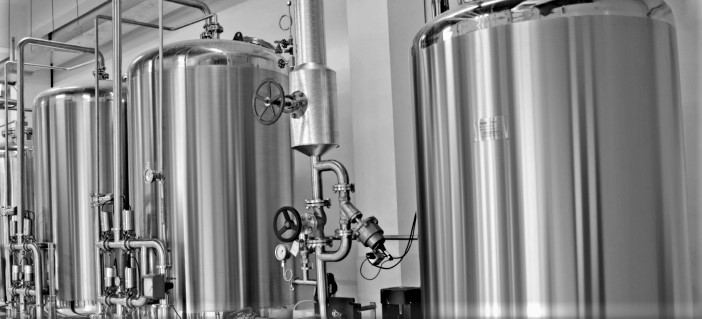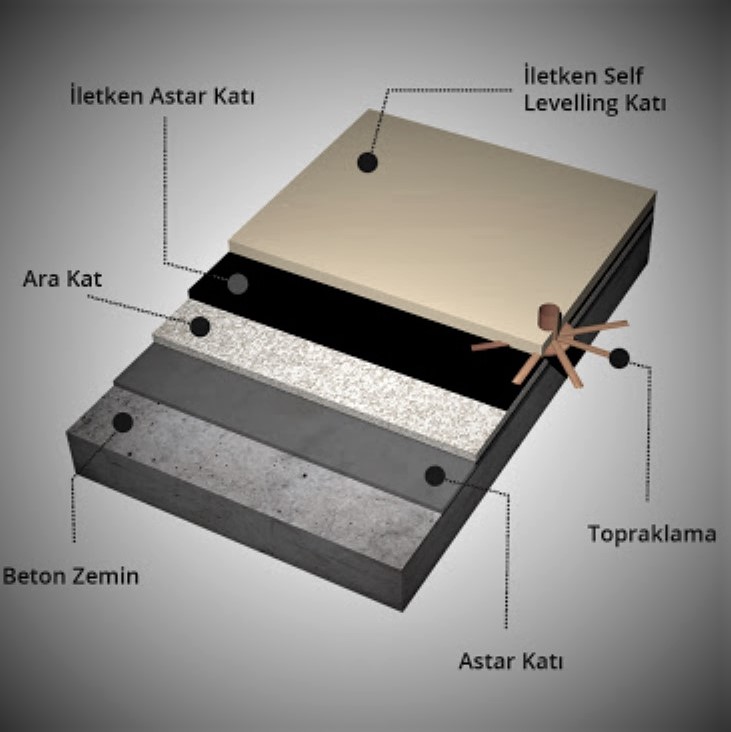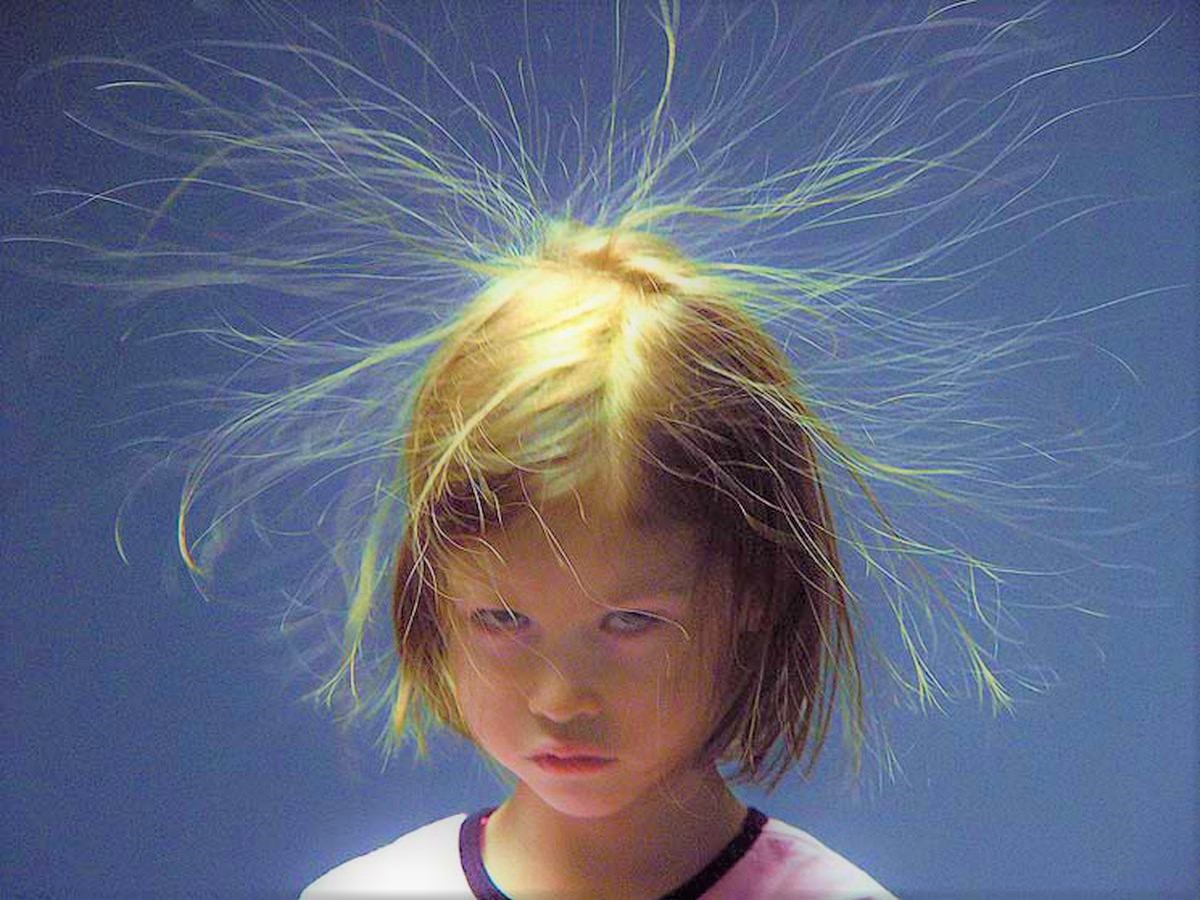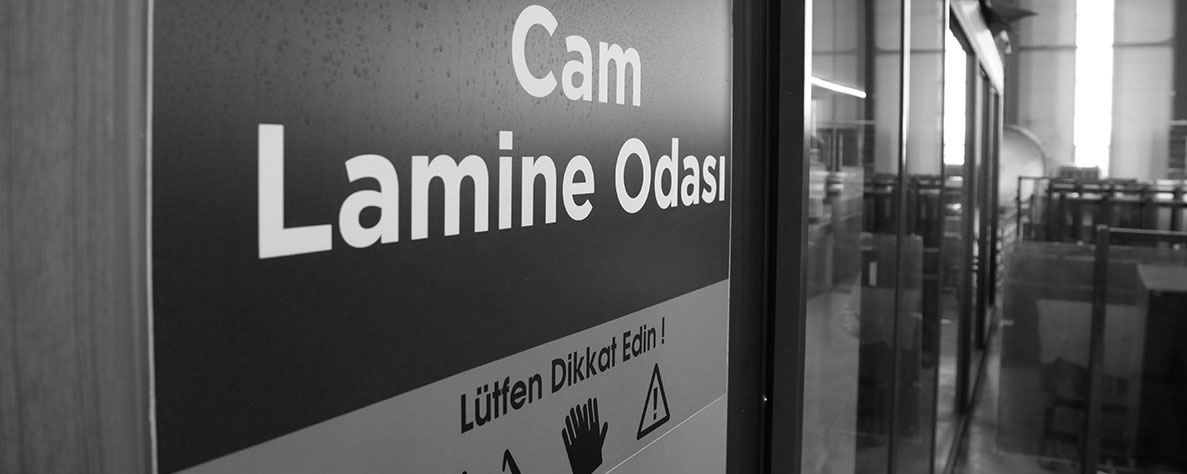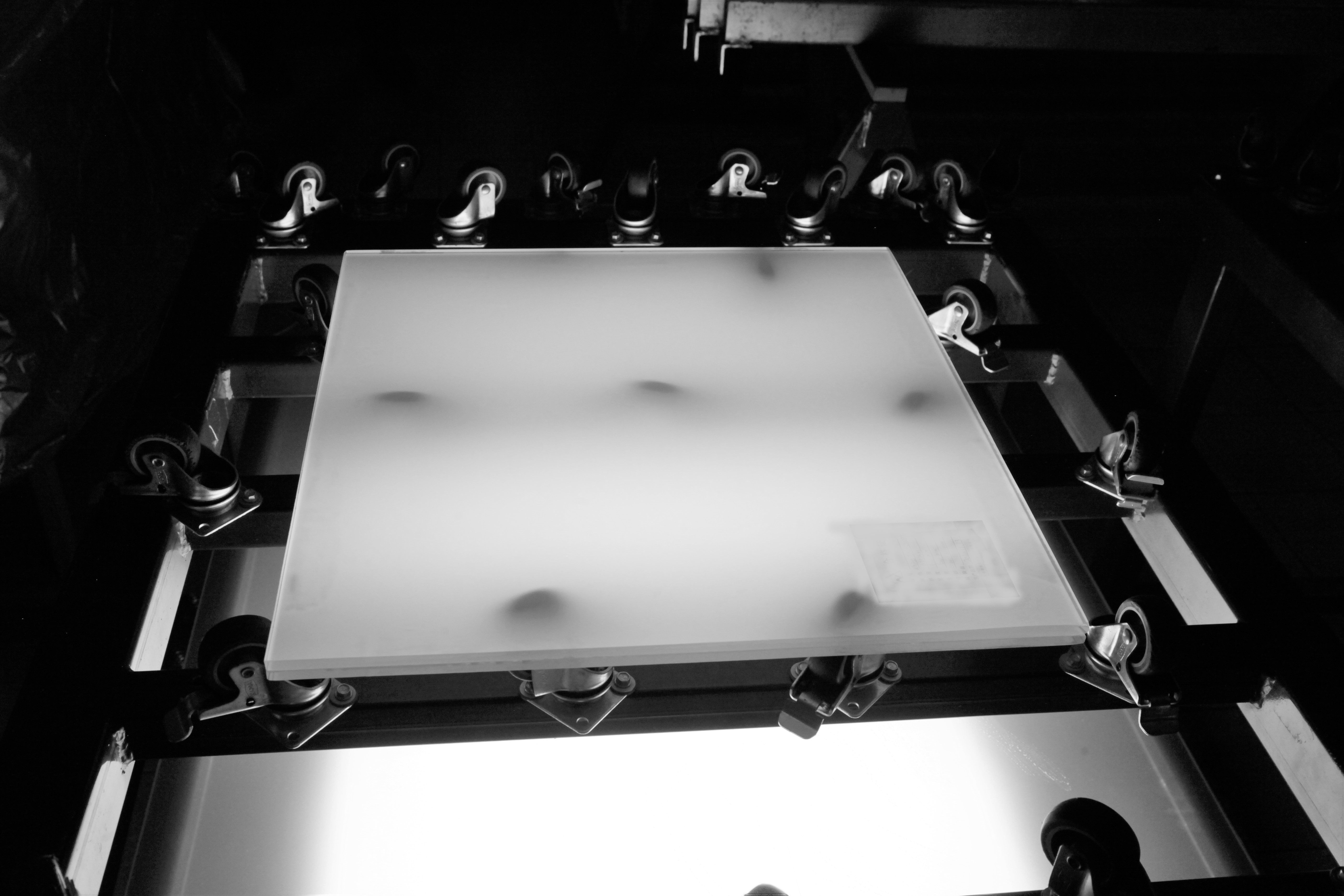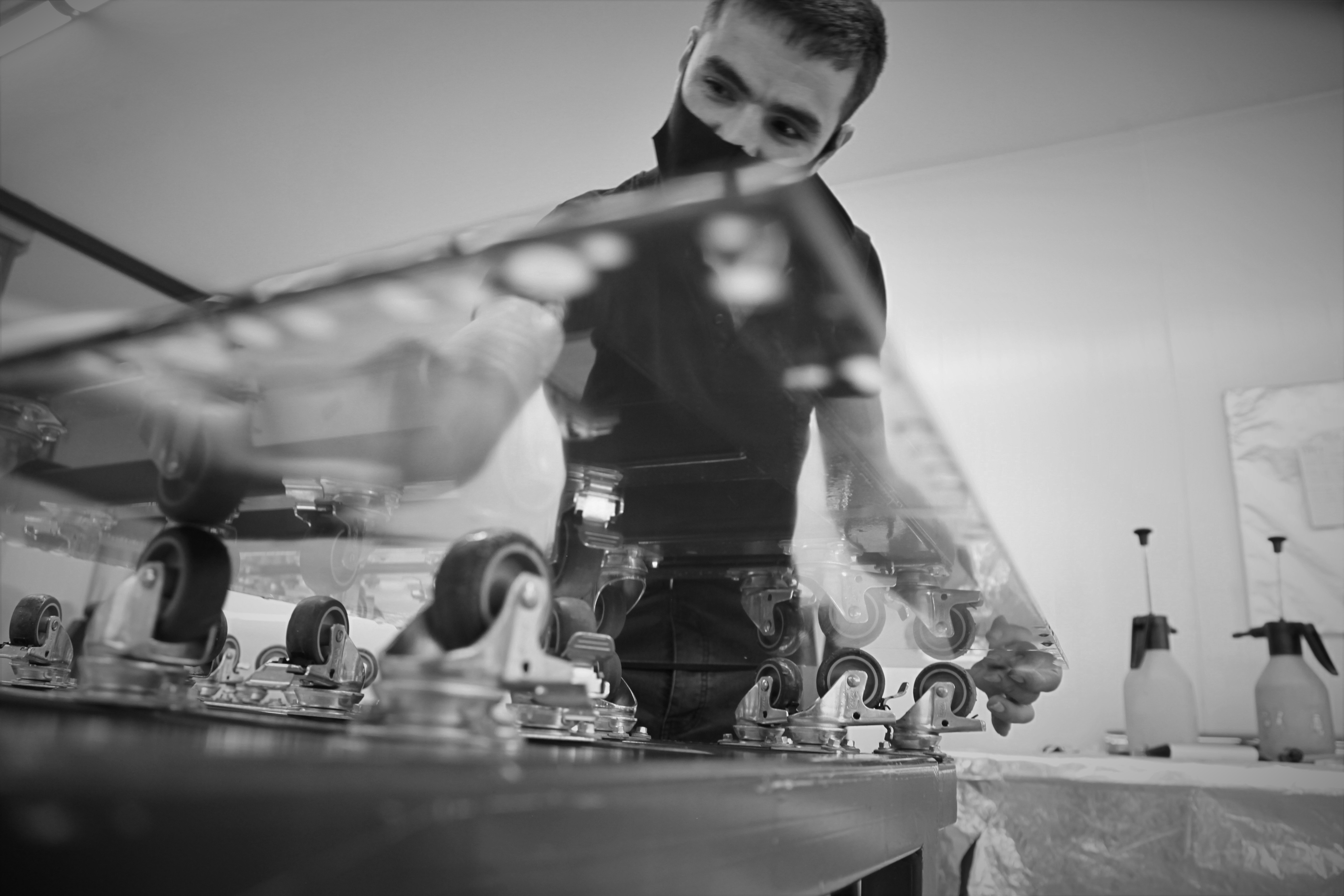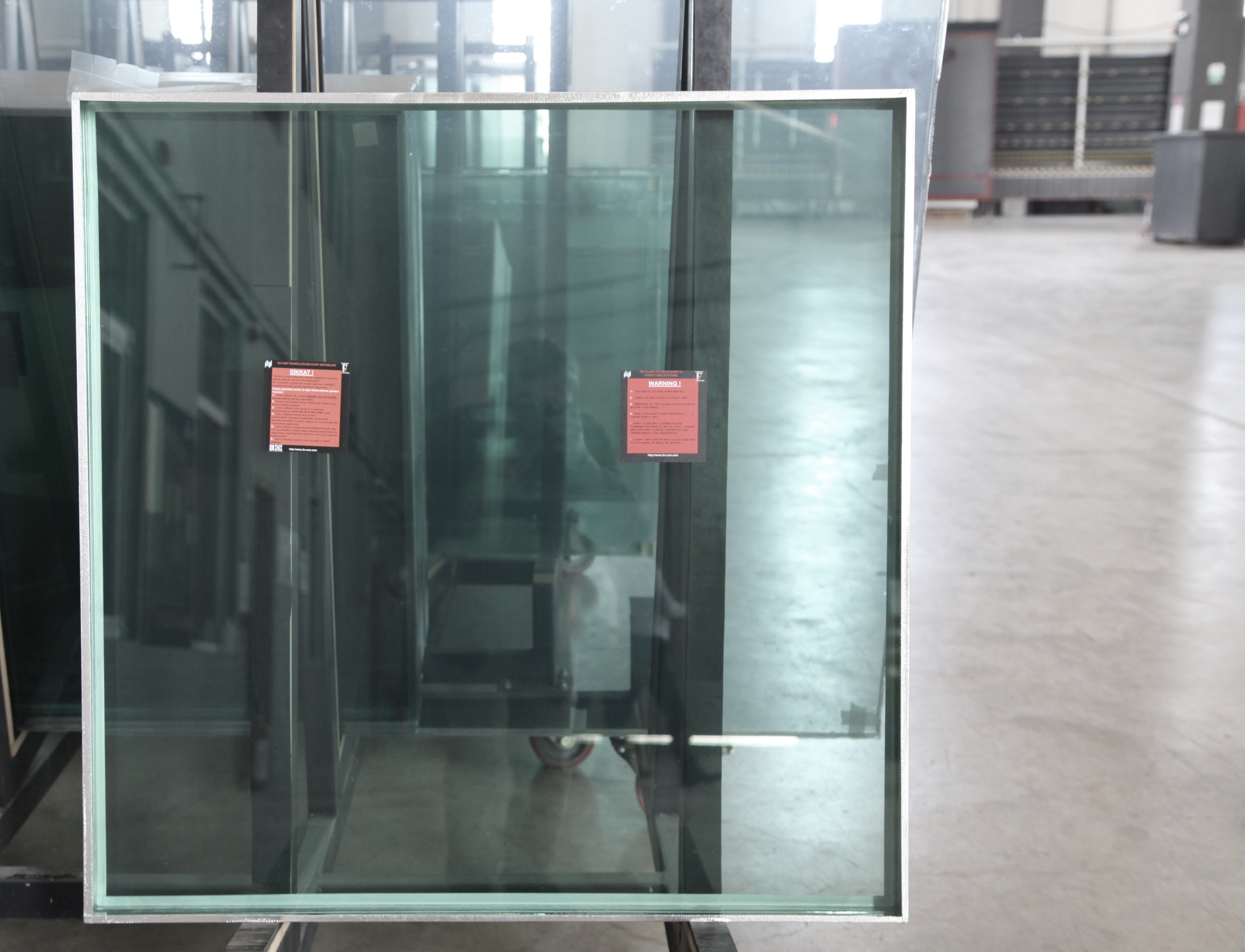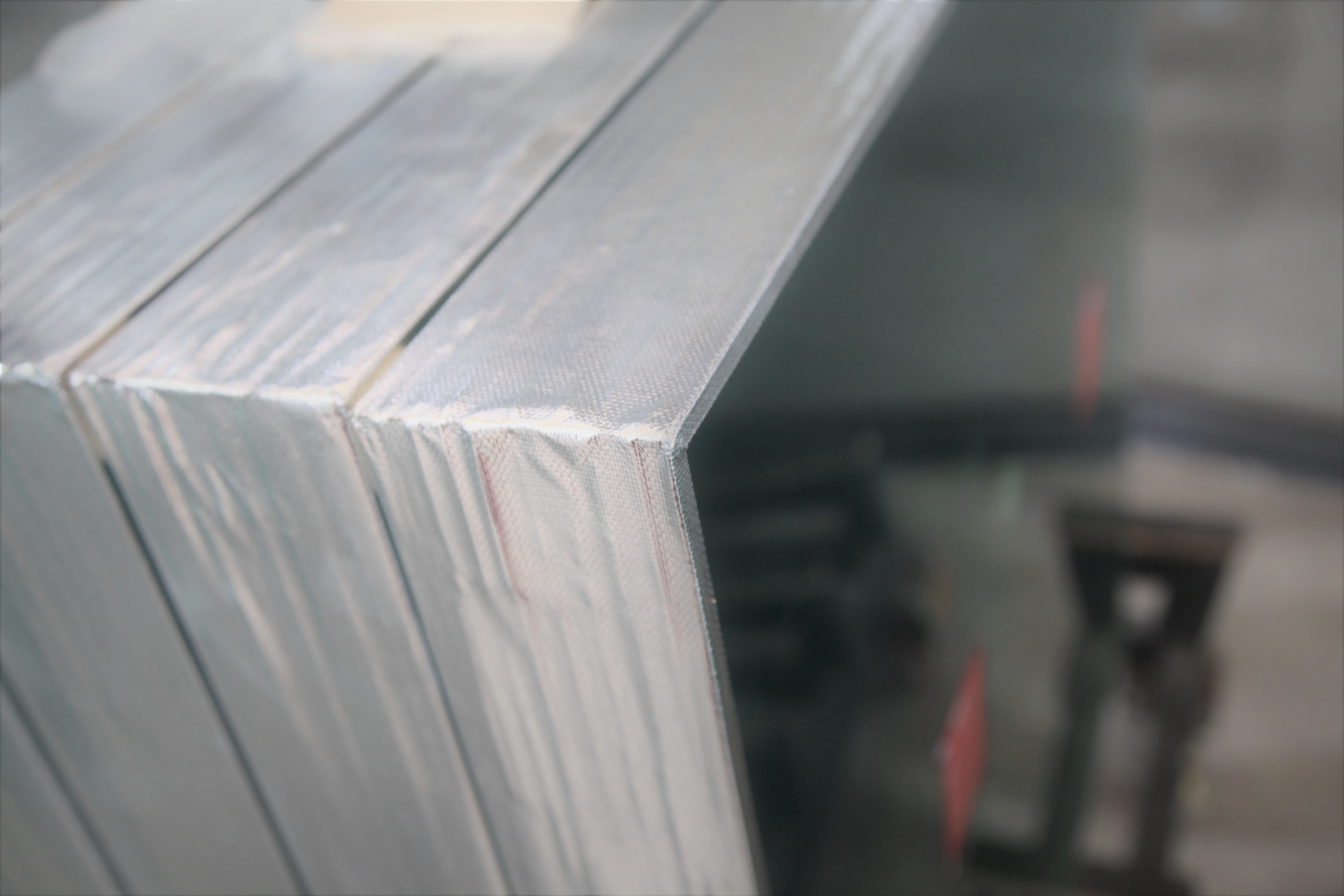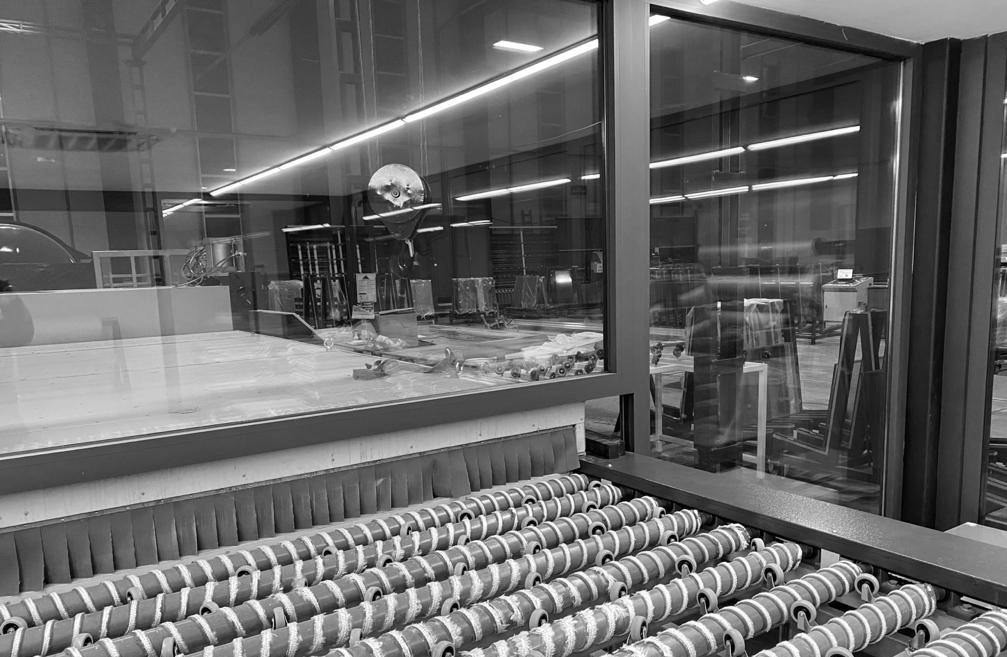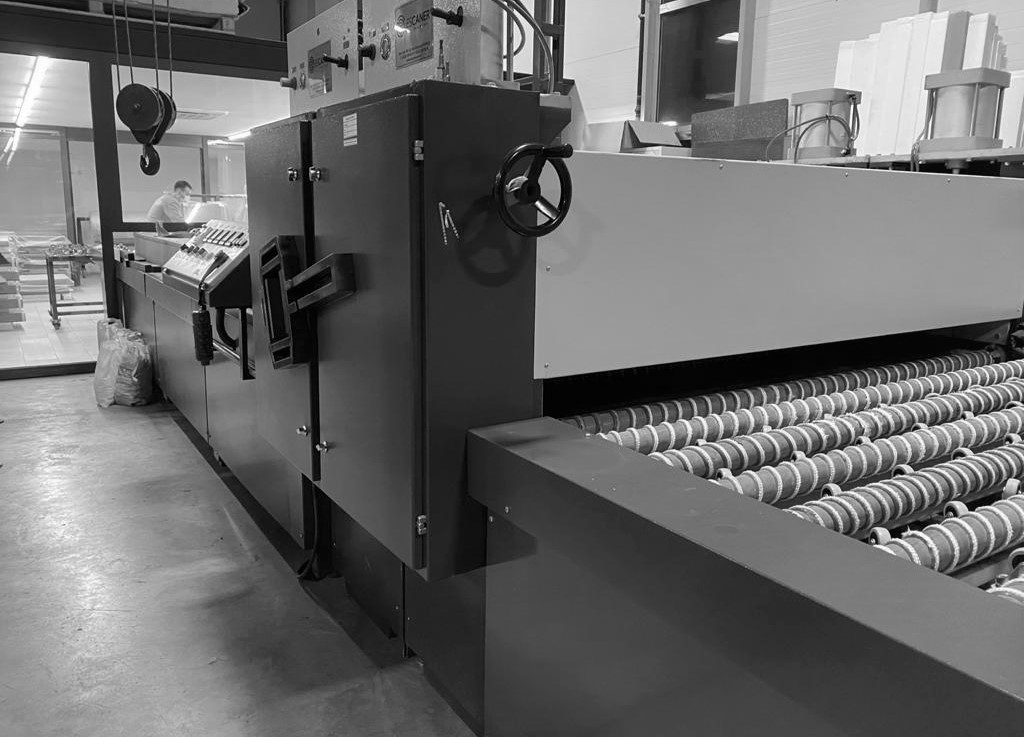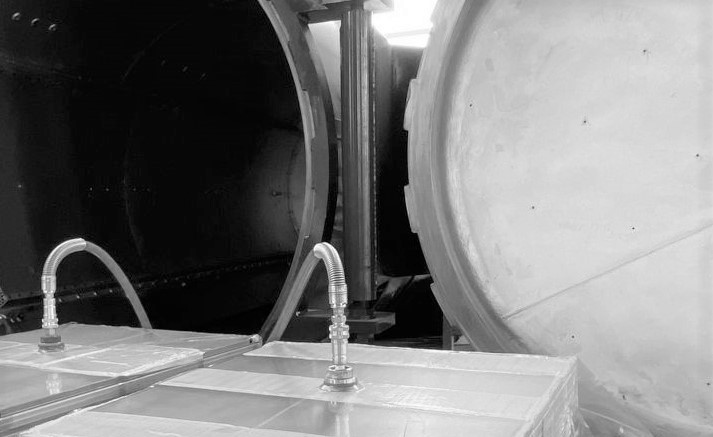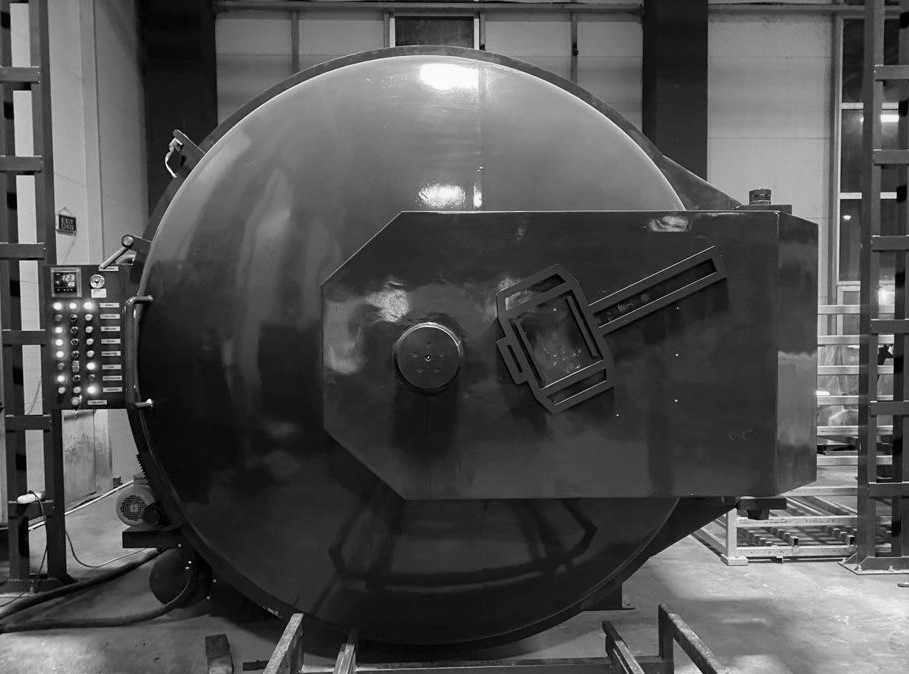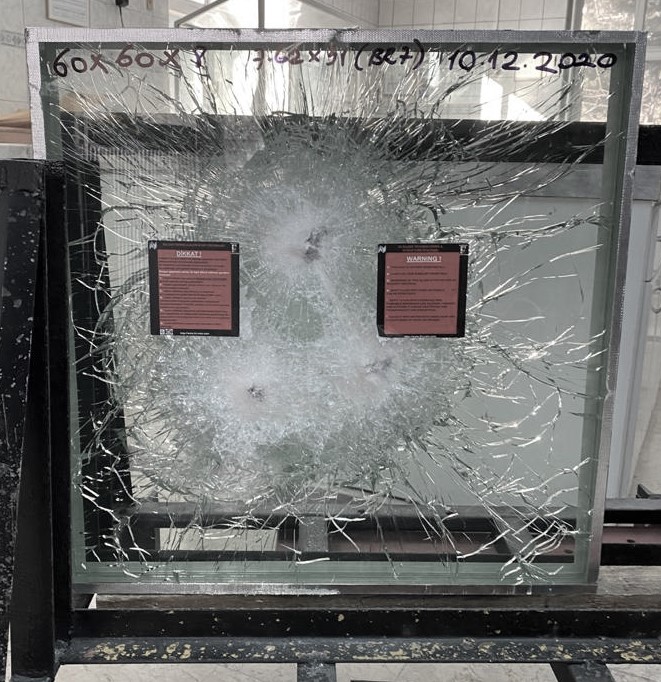
1 - Glass Cutting Line
In the ASGARD glass cutting line, we cut glass plates with an automatic cutting machine according to the bulletproof glass dimensions to be produced.
2 -Glass Edge Processing Line
We remove the sharpness of all edges of the glass with automatic machines in the edge processing line. We provide the most suitable edge processing, technically speaking, by " Chamfered Flat Grinding" .
Bulletproof glasses made without removing the edge sharpness will cause them to deteriorate in a short time as it will not allow the application of polyurethane tape to be applied to all edges in order not to be affected by moisture or deteriorate.
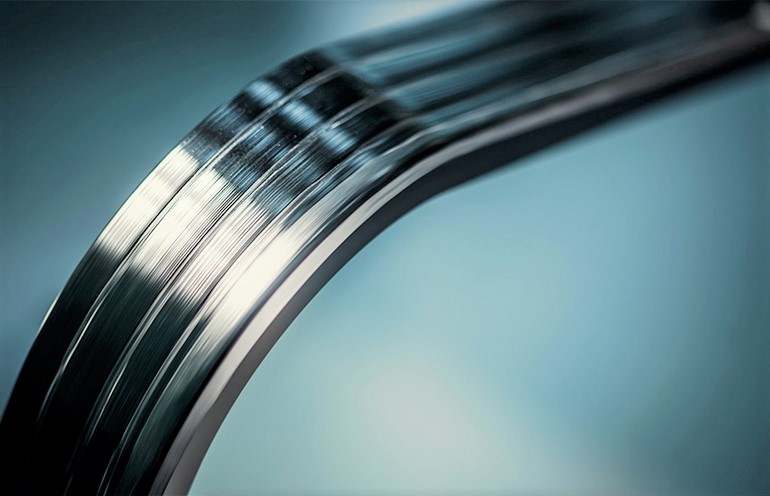
By eliminating the size differences in the edge processing line, we ensure that all glass layers are exactly the same size.
The glasses need to go to the lamination room very clean. We send the glass coming out of the edge processing line to our washing-drying line with glass transport trolleys.
3 -Washing and Drying Line
We use water that provides ideal conditions in our production lines and industrial treatment systems.
This situation will cause a decrease in the quality of the bonding materials (PVB or Polyurethane) adhering to the glass surface with the glass, resulting in deterioration of the product.
We send the glasses, which are washed and dried with demineralized water in our washing-drying line, to our lamination line with glass transport trolleys.
4 -Lamination Line
Laminating Chamber, the smallest dust etc. It is a clean room where particles are purified at the same time, microorganisms at the bacterial level, and heat and humidity balance is provided.
We provide these conditions with Ventilation and Air Conditioning Systems .
As ASGARD, we make production in our production facility in a working environment that is specially designed for bulletproof glass production and provided with ventilation and air conditioning system.
- We keep PVB and Polyurethane materials in aluminum packaging at a temperature between 8 0C-10 0C until they are used.
- Laminated room ambient temperature is between 18 0C-20 0C,
- Ambient humidity is between 18% and 20%.
In the lamination room, even if it is completely dust-free with the ventilation system, precautions must be taken against the power of Static Energy to move the particles.
PVB and other binders used in lamination tend to be affected by Static Energy.
Contact with PVB and other binders with non-antistatic work clothes or bare hands causes the binders to attract particles smaller than dust to its surface.
- Glass plates from production
- PVB (Polyvinylbutural), which is the binder that allows the glass plates to stick together
- Polycarbonate in the last layer in lamination
- Polyurethane bonding the glasses with the polycarbonate material
Edge Banding
5- Asgard Heating and Press Line
We send the glasses, whose joining process is completed in the lamination room, to the Heating and Press Line.
Glass Components (Glass and Polycarbonate) + Binders (PVB and Polyurethane)
• Laminated glass coming out of the Heating Furnace and the Press as such, the Glass Components and Binders are not completely adhered. The air inside the PVB and polyurethane binders is not completely removed and is not completely transparent.
Vacuum Bag:
6- Otaclav Oven
We take 1 piece of bulletproof glass that we produce and perform a bulletproof shot test.
We make the final physical controls and send them to the loading and shipping department.

